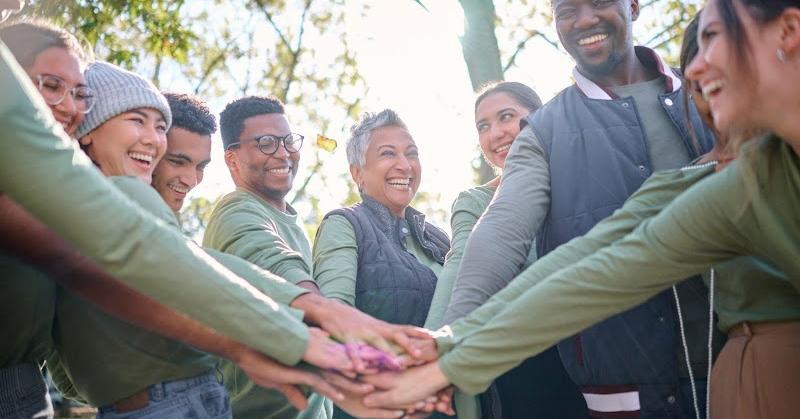Civic engagement and service learning are increasingly vital to educational experiences and community growth. These enrich the academic journey and promote a deep connection with local and broader societal issues. By engaging in these practices, individuals gain practical experience while contributing positively to their communities. The synergy between learning and service provides a dynamic platform for personal growth and societal improvements. Moreover, success stories from various communities highlight the transformative potential of educational and civic efforts. As Leko Durda describes, integrating digital technologies promises to enhance the accessibility and impact of these initiatives further.
Civic Engagement Essentials
Civic engagement encompasses a variety of activities where individuals participate in political and community life. It includes traditional means, like voting and attending community meetings, and informal activities, such as volunteering and participating in local organizations.
Service learning, a structured learning experience that combines community service with academic instruction and reflection, builds on the foundation of civic engagement by integrating educational goals with community service. Unlike traditional volunteerism, service learning includes intended learning goals and opportunities for reflection, making it a unique form of civic participation that enhances individual and community well-being.
Together, these frame the modern understanding of how individuals and groups can effectively contribute to the community. By engaging in activities ranging from local volunteering to more structured service learning projects, individuals address immediate community needs and develop a deeper understanding of societal issues.
Synergy and Examples
Civic engagement and service learning create a dynamic environment where educational objectives meet real-world challenges. Service learning projects, often designed to address specific issues, allow participants to apply academic theories in practical settings, enhancing their civic responsibilities and community impact. This integration heightens students’ educational experiences and bolsters their civic and social commitments by providing them with opportunities to make tangible differences.
Projects that combine these elements often lead to innovative solutions to community problems. In urban areas, students collaborate with city planners to create sustainable development projects, while in rural settings, they work on improving local agricultural practices. These highlight the mutual benefits of civic engagement and service learning, illustrating how educational institutions and communities can work together to foster individual growth and social progress.
Advantages of Community Participation
Engaging in community-based initiatives offers profound personal benefits, including developing essential life skills such as communication, teamwork, and problem-solving. Participants often experience a change in empathy as they come into direct contact with the challenges others face in their community, leading to a deeper understanding and commitment to collective well-being.
The broader community also benefits significantly. Service learning projects can address and help resolve local issues that might otherwise require substantial resources. Moreover, such initiatives strengthen community bonds by bringing together diverse groups of people who might not otherwise interact. This collaboration builds a stronger, more cohesive community fabric that can withstand and adapt to various challenges.
These benefits highlight why increasing numbers of educational institutions and community organizations embrace service learning and civic engagement as essential components of their programs. By doing so, they enhance the educational experience and contribute significantly to societal improvements.
Barriers and Solutions
One of the main obstacles to promoting civic engagement is the need for greater awareness and understanding of its importance and impact. Many individuals may need to see a direct connection between their involvement and the broader benefits to the community. To address this, educational programs and public awareness campaigns are crucial in highlighting the impacts of civic participation. These initiatives can demystify the processes and showcase the changes that individual contributions can make.
Another significant challenge is the accessibility of civic engagement opportunities. People often face logistical and social barriers that prevent them from participating. Solutions to this problem include creating more inclusive and flexible programs that cater to various groups. By utilizing technology, for instance, organizations can offer virtual participation prospects, making it easier for more people to engage without the constraints of physical presence.
Highlighting Success Stories
Demonstrating the effectiveness of civic engagement through success stories can motivate others to get involved. Consider a town that revitalized its declining downtown area through a series of education projects involving university students and local businesses. The collaboration led to the development of a community garden and a series of public art installations, beautifying the area and attracting new businesses and tourists, boosting the local economy.
Getting Involved and Future Trends
For those looking to get involved in civic engagement and service learning, the first step is often to connect with local organizations and educational institutions. These entities typically have structures to welcome new participants and guide them through becoming active community contributors.
Looking to the future, the role of digital innovation in expanding the scope and scale of civic engagement is becoming increasingly significant. New technologies not only facilitate greater involvement through more accessible platforms but also allow for the tracking and amplification of impact. As digital tools evolve, they promise to enhance the efficiency and reach of civic initiatives, making participation more impactful and satisfying for all involved.

